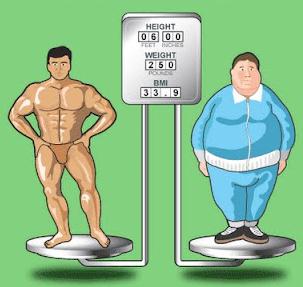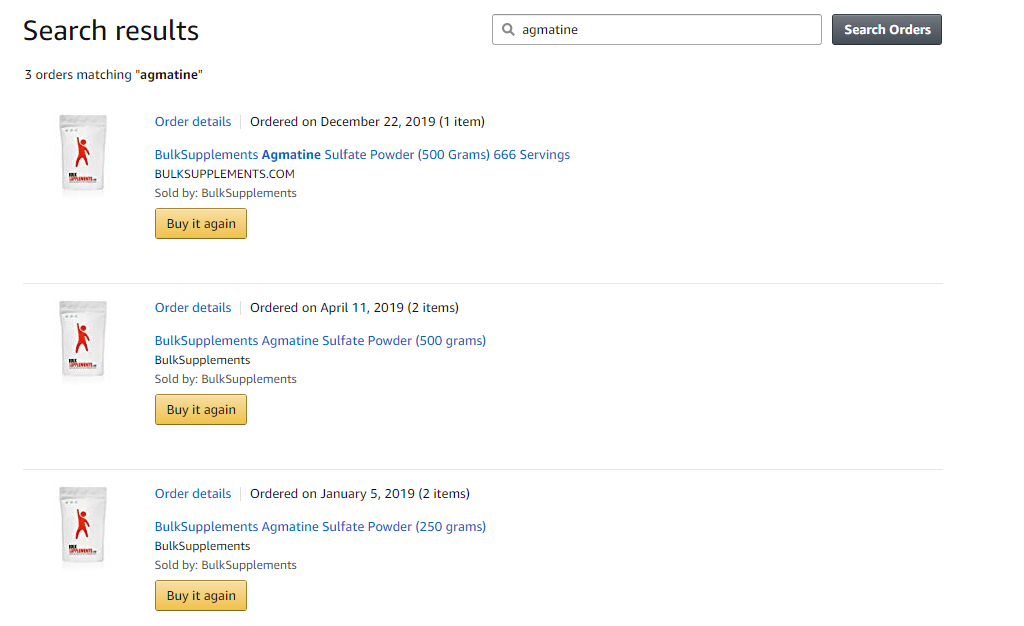If you’re looking for a solid bodybuilding supplement, you’re in luck today.
In this post, we’ll be going over one particular product that has been shown not only to aid our bodybuilding efforts in some profound ways but also to deliver numerous health benefits.
What’s more, folks use this compound both before working out to aid in performance, as well as afterward, to help with recovery.
So, without further ado, let’s get into the meat and potatoes of the compound in question – agmatine.
Agmatine is a bodybuilding supplement with many benefits. It can induce “muscle pumps”, boost insulin sensitivity and improve nutrient partitioning, just to name a few.
Today, you’ll learn what agmatine is, what it does to the body, and how you can use it to accelerate your bodybuilding progress.

But First, What Is Agmatine, Exactly?
Agmatine is a chemical compound that is derived from the amino acid L-arginine through a process called decarboxylation.
The compound, which is often referred to as super arginine, plays crucial roles within our nervous system as it serves both as a neurotransmitter (chemical messenger) and neuromodulator (also a messenger, but one that is sent from neurons into the nervous system).
Agmatine is stored within our neurons and is released in response to neural activities. It has been shown to affect our mood, cognitive performance, and memory. Agmatine also appears to improve performance measures, aid in muscle growth, and even help prevent certain diseases like Alzheimer’s and diabetes from developing.
On top of all that, preliminary research suggests that agmatine can be used to help aid with drug addiction, as well as suppress pain.In the supplements market, you can most commonly find agmatine in capsule or powder form. And, in recent years, the compound has been gaining more and more attention in the fitness and bodybuilding sphere. Let’s take a more in-depth look at the benefits.
Check out this video from PictureFit discussing the benefits of the Pump.
Agmatine’s Effects on Nitric Oxide Production and Muscle Pumps
Nitric oxide is one of the most critical molecules within the body. It plays vital roles in numerous processes, including vasodilation (the widening of blood vessels which improves blood flow), blood pressure regulation, reduction in muscle soreness, and athletic performance.
Nitric oxide production relies on four primary enzymes: nNOS, bNOS, eNOS, and iNOS (not to be confused with Apple products). These are a family of enzymes (collectively referred to as Nitric oxide synthase) that together accelerate the production of NO from the amino acid l-arginine.
Now, these enzymes need to be regulated, because, if left unchecked, they can cause problems for us. For example, nNOS can inhibit the repair of neurons, and iNOS can cause inflammation.
In some studies, agmatine has been shown to positively impact nitric oxide production through its influence on nitric oxide synthase enzymes. More specifically, agmatine helps lower iNOS and nNOS, while increasing eNOS (1, 2, 3).
All of this means that agmatine may bring about these great benefits, most notable of which is vasodilation.
You see, vasodilation not only improves muscle pumps but also allows for more oxygen and nutrient-rich blood to enter your muscles (4). This can improve your gym performance and keep metabolites like lactic acid from building up – which itself is a massive factor for perceived fatigue (5, 6).
Think back of a time where you did an incredibly demanding, high-repetition set at the gym – be it a bicep curl, calf raises, chest fly, or some other single-joint exercise. Chances are, you felt this incredible burn that eventually made you quit the set, even if you technically still had it in you to do extra repetitions. It’s not so much that you were unable to keep going, but rather the build-up of metabolites is what made you stop.
More nutrients entering muscle tissue (particularly amino acids), may also improve rates of muscle protein synthesis and reduce the rate of protein breakdown during and after intense training (7). All in all, it’s not a stretch to assume that higher levels of nitric oxide can lead to more muscle growth over time.
Another thing worth going over (though it’s mostly speculative as of now) is that increases in nitric oxide may positively impact your training volumes in that you’ll be able to do more work (more repetitions, as per the above example) and not become as fatigued. And since research has found a tight correlation between the amount of work we do at the gym and the results we get in return, this could prove to be another link between agmatine and long-term muscle growth (8).

Agmatine and Nutrient Partitioning
Nutrient partitioning (also known as the p-ratio) represents how much protein you gain during overeating and how much of it you lose during undereating. A low p-ratio means that your body uses less protein and more fat when undereating. A high p-ratio means that you lose more protein (lean tissue) and less fat in a caloric deficit. In general, your p-ratio is about the same during over- and underfeeding. Meaning, you tend to gain (and lose) fat and muscle in a similar ratio during bulking (and cutting).
So, ideally, 100 percent of the calories we overeat will go toward repair and muscle growth, and 100 percent of the calories we need during a caloric deficit will come from our fat tissue.
But, as you’ve probably found out, things aren’t ideal. Some folks can gain a lot of fat even on a controlled surplus (no more than 200 over maintenance) with solid training and recovery plans. Other, more genetically-blessed individuals, can put very little fat and a lot of muscle with a poor training plan and a large caloric surplus (500 or more calories over maintenance).
Now, your p-ratio is mostly genetic. For better or worse, what you have can’t be influenced much. But, proper training, plenty of sleep, and good nutrition can lower your p-ratio to a degree.
One other factor that may play a role here is agmatine. You see, as we discussed above, agmatine may improve gym performance thanks to vasodilation (5, 6). Because of that same effect, the compound may also allow for more nutrients to travel to the muscles, increase the rates of protein synthesis, and potentially lead to more muscle growth.
This is where it gets interesting (and a bit speculative):
For the most part, we all know that to gain muscle optimally, we need some form of a caloric surplus (excluding folks new to training, obese individuals, and people coming back from a long break). And we understand that our p-ratio dictates how many calories go into muscle repair and growth, and how many get stored as fat.
Now, since we know that agmatine leads to vasodilation, it’s not much of a stretch to assume that it can also nudge our calorie partitioning in a favorable direction (4). This is because more oxygen-rich blood traveling to our muscles means that we would have better workouts and do more work (volume) before getting fatigued. That’s one.
Second, more nutrients entering your muscles before the workout is even over would mean that your body ‘invests’ more calories into muscle tissue for repair and subsequent growth. And more calories going to lean mass means that fewer are left to get stored as fat. Over time, be it during over or undereating, this small alteration in your p-ratio can help you reap better results in the gym.
Sadly, this is mostly speculative as of right now, as there haven’t been many studies looking at the effects of agmatine. But, from a mechanistic standpoint, this does make sense, and it certainly is an area worth exploring in the upcoming years.

Agmatine and Pain Reduction
Some research suggests that agmatine supplementation may offer pain relief. More specifically, in one study, researchers found that small doses of agmatine decreased pain in rats with spinal cord injuries (9).
Injuries close to nerves (such as spinal cord ones) often cause hypersensitivity to pain – every movement shoots jolts of pain signals to your brain. This occurs thanks to neuroplasticity – rewiring your brain to identify new stimuli as pain.
Researchers in the study speculate that agmatine supplementation may offset these changes in the brain, and even reverse them to a degree. Through a couple of mechanisms, this would mean that agmatine can offer pain relief and also help patients with chronic pain (10).
Some research has also found that agmatine can work synergistically with painkillers like morphine. This is great on a couple of fronts:
First, it prevents (or, at least, offsets) the development of tolerance to painkillers. Second, it helps relieve pain through smaller doses of painkillers and reduces the risk of addiction and other drawbacks.
Finally, thanks to agmatine’s ability to reduce pain caused by inflammation, we can also see how agmatine supplementation may be beneficial in the gym. Thanks to that, and the accelerated removal of metabolites from muscle tissue (via vasodilation), folks supplementing with agmatine may be able to train harder and longer.

Agmatine’s Role in Depression and Anxiety
Serotonin is a neurotransmitter, and its primary job is to send signals between nerves. In the brain, serotonin is heavily involved in processes that regulate our mood, well-being, sexual desire, sleep, appetite, memory, and depressive symptoms (11).
Studies have found a tight correlation between low levels of serotonin and mood disorders such as depression and anxiety.
Now, being classified as a nootropic, agmatine’s effects reach farther than the muscle pump. In some studies, agmatine supplementation has been shown to enhance the impact of serotonin within the brain, which can help it, and other serotonin-boosting supplements, become more productive (12).
In one rodent study, researchers found that agmatine may offset depressive symptoms brought about by stress (13). Further, researchers in the study note that agmatine administration increased levels of serotonin, dopamine, and noradrenaline.
A few other studies have also suggested that agmatine supplementation may induce antidepressive qualities (14, 15, 16, 17).
The only issue here is that we’re mostly relying on animal research so far. But seeing as there are a lot of similar mechanisms in different mammalian organisms, it’s not a stretch to assume that agmatine may deliver many of the same benefits to us, as well.
Agmatine Recommended Dosage
The bad news is, we still don’t have clear guidelines for agmatine dosage due to the lack of human trials. Doses of up to 3.5 grams daily appear to be safe for human intake, but the upper limit is yet to be established.
- For improvements in cognitive function, agmatine has been shown to deliver benefits at doses of 200 to 500 mg daily (or 1.4 to 6.4 mg per kilogram of body weight) (10).
- For pain relief, effective doses seem to range between 1,000 and 2,500 mg per day.
- For training benefits (vasodilation, pump, and energy) a dose of 500 to 1,000 mg shortly before a workout appears to work great.

Other Potential Benefits of Agmatine
With all that we’ve covered so far, agmatine seems to have some great potential. But wait, there’s more.
1) It may prevent the development of Alzheimer’s disease.
Alzheimer’s is a devastating disease that slowly deteriorates brain health and eventually leads to death. What’s interesting here is that insulin resistance is one of the most significant factors that contribute to the development of Alzheimer’s, as low sensitivity to insulin is known to cause the build-up of plaque in the brain.
Agmatine may prevent this from happening because it appears that the compound improves insulin sensitivity to a degree and prevents plaque and neurofibrillary tangles from building up in the brain (18, 19).
2) It may lower high blood pressure.
As we discussed above, agmatine is well-known to induce vasodilation which naturally helps the body maintain healthy blood pressure (1, 2, 3, 20).
Not only does this help with nutrient delivery, but it also helps prevent serious health concerns down the road, including heart attack and stroke.
3) It may reduce inflammation.
At the start of this article, we briefly discussed that one of agmatine’s effects is with the regulation of nitric oxide synthase. More specifically, agmatine helps inhibit the iNOS enzyme, which, if left unchecked, can cause systemic inflammation (1, 2).
So, agmatine may prove to be a very effective anti-inflammatory supplement for us.
4) It may lower blood glucose levels and improve insulin sensitivity.
In one rodent study, agmatine increased insulin sensitivity which helped improve the uptake of glucose into the muscles. This is excellent news because better insulin sensitivity is vital for good health, but it also leads to more effective absorption of glucose and amino acids into muscle tissue. All in all, this allows for better recovery and increased muscle growth over time (18, 19, 21).
5) It may increase the production of luteinizing hormone (LH)
Luteinizing hormone plays a vital role in the reproductive system for both men and women and is critical for male testosterone production. Normal levels of the hormone are essential not just for good health, but also for the best possible outcomes in the gym.
Agmatine supplementation may help with the production of luteinizing hormone, as research has found a strong dose-dependent relationship (22).
Suggestion: Another great supplement with tons of benefits is Glycine. Click this link to read an article about it.

Are There Any Side Effects and Drawbacks to Agmatine Supplementation?
To be sure, we need more human research before concluding here, but there are some side effects and potential drawbacks you should know about:
Some minor GI discomfort.
A small percentage of folks in research papers have reported side effects like vomiting, diarrhea, and nausea. But all of these symptoms cleared up within a couple of days of discontinuing supplementation (10).
It’s also worth pointing out that these symptoms occurred in participants who supplemented with about 3.5 grams of agmatine per day. For reference, doses of up to one gram appear to be enough to increase our athletic performance.
Not enough human trials.
The majority of research on agmatine so far has been conducted on rodents. Sadly, there haven’t been many human trials so far, and all the findings should be taken with a grain of salt.
Several drugs and supplements inhibit agmatine’s effects.
- Arginine. This amino acid is known to raise levels of eNOS and nNOS in rats, but short-term arginine supplementation doesn’t appear to influence nitric oxide synthase in healthy folks (23, 24).In theory, both arginine and agmatine work to increase levels of eNOS and bring about vasodilation. But how that might play out in the real world is yet to be determined. Plus, arginine and agmatine have opposite effects on nNOS – arginine increases it, and agmatine decreases it.As you can imagine, this direct contradiction in effects between arginine and agmatine isn’t a good thing.
- Yohimbine. This compound is commonly used as an aid in fat loss. The problem is, agmatine is known to activate the α2 adrenergic receptors (which play essential roles in neurotransmitter release), but yohimbine is known to inhibit them.Thus, yohimbine negates some of the positive benefits agmatine offers with regards to neural function (25, 26).
- Citrulline malate.We already covered how arginine and agmatine collide, and why taking both at the same time negates the effects of agmatine. The problem with citrulline malate is that a large portion of it gets converted to arginine once consumed, which can impair the effects of agmatine (27).
- Alcohol.Some rodent research suggests that agmatine taken in combination with ethanol (alcohol) may lead to stomach ulcers (28).
Lowering of the blood pressure can be bad for some folks.
As we covered above, agmatine can lower blood pressure. This is great for hypertensive folks, but not so great for people with low to normal blood pressure. Agmatine supplementation may lower their blood pressure too much and cause side effects like dizziness, lightheadedness, blurred vision, and even fainting.
Increased appetite.
Like the previous effect, this too can be good for some and bad for others. For example, if you’ve always been naturally skinny and with a poor appetite, agmatine supplementation might be great for you.
But if you have a strong appetite and are looking to shed some fat, then the potential benefits of agmatine supplementation may not be worth this significant trade-off.

Three Ways to Increase Agmatine Levels In Your Body
For the most part, you have three options of increasing agmatine levels:
1) Exposing yourself to cold temperatures.
One study from 2003 found that exposure to cold temperature (about 4 degrees C for four hours) raised agmatine levels within the brain (29). Researchers speculated that these increases could be because agmatine serves as a neuroprotective agent.
2) Going on a ketogenic diet.
Interestingly enough, extremely low carb intake has been shown to increase levels of GABA (an inhibitory neurotransmitter) and agmatine in rodents (30).
3) Supplementing with agmatine.
Despite the ‘pleasant’ choices you have, supplementation remains your best bet. Agmatine sulfate is widely sold in powder form and reliably raises levels in the body.
The Bottom Line on Agmatine for Bodybuilding
So far, we’ve gotten quite a few exciting studies to look through. Agmatine appears to play numerous regulatory and protective roles within the body, and supplementing with the compound may be very beneficial.
Agmatine has a hand in processes like muscle growth, insulin sensitivity, nutrient partitioning, pain reduction, and nitric oxide synthesis. But it also plays roles in some other metabolic processes, including:
- The prevention and treatment of anxiety disorders and depression (12; 13, 14, 15, 16, 17);
- The prevention of Alzheimer’s disease (18, 19);
- Normalizing blood pressure (1, 2, 3, 20);
- Production of luteinizing hormone and supporting testosterone levels (22);
The only downside so far appears to be the minor side effects, including GI discomfort (in some participants), it’s interaction with arginine (and thus citrulline supplementation), the increased appetite (for some folks), and the lower blood pressure (which can be problematic if you usually have low blood pressure).
Aside from that, we do need more human trials before concluding, so keep this in mind when taking or prescribing agmatine.
If you liked this article, please comment and share and then go Pump Some Iron! Thank you!
Follow me / Pump Some Iron on Instagram for updates @pump.some.iron



